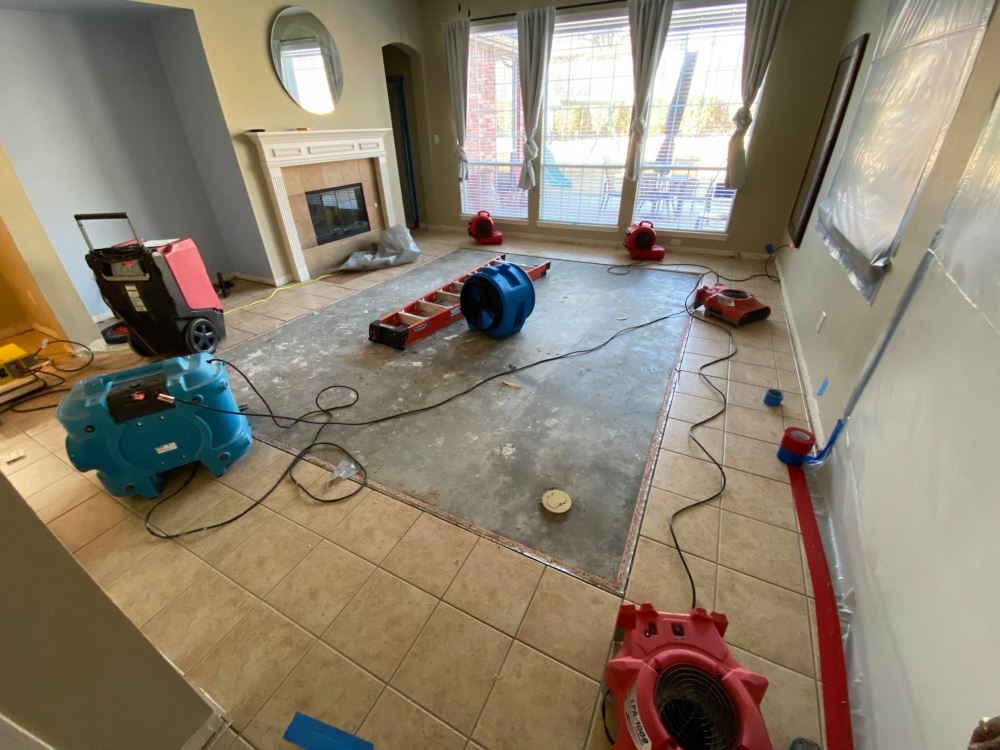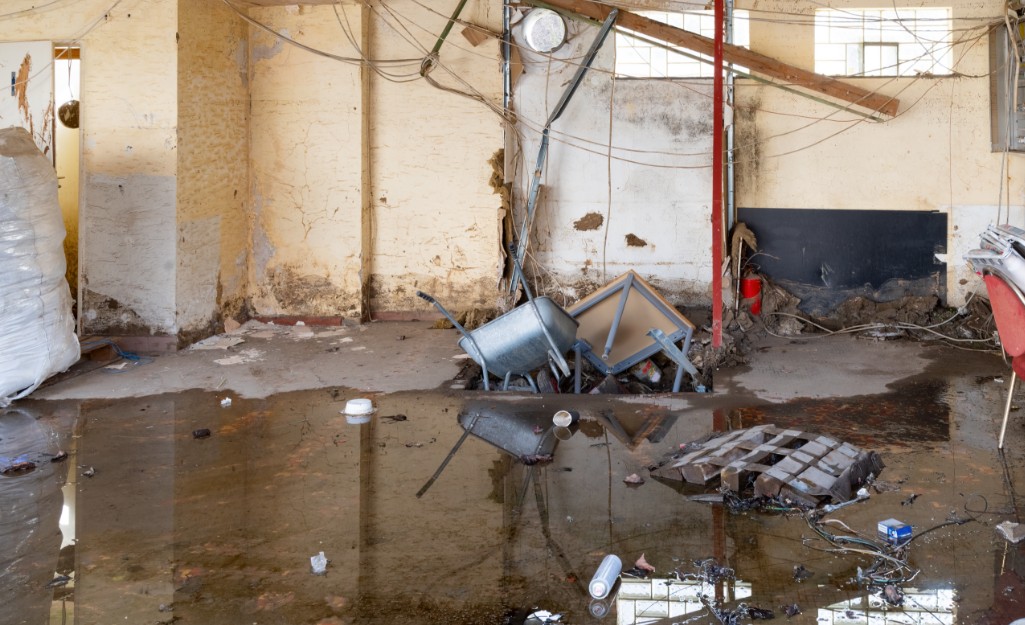Water Damage Restoration 101: Understanding the Process and Expense
Water damage can strike suddenly, leaving house owners in a state of complication. Recognizing the reconstruction procedure is essential for effective recovery. From assessing the damage to choosing the ideal company, each step affects the general result and expense. Aspects such as the kind of water damage and seriousness also play a considerable duty. What are the specific techniques utilized in repair, and exactly how can one get ready for prospective expenditures?
Kinds Of Water Damage
Water damage can emerge from numerous resources, each presenting distinct challenges for remediation. The three key kinds of water damage are classified based on contamination levels: tidy water, grey water, and black water. Tidy water stems from sources like broken pipes or rain, presenting very little health and wellness risks. Gray water, that includes wastewater from sinks or cleaning equipments, includes contaminants that might trigger discomfort or ailment if consumed. Black water, one of the most unsafe classification, comes from sewer or floodwaters, consisting of damaging bacteria and pathogens. Each kind demands certain remediation techniques and safety and security steps to effectively mitigate and resolve the damage health and wellness dangers. Comprehending these distinctions is crucial for specialists and property owners associated with the water damage remediation procedure.
Initial Evaluation and Examination
A complete initial evaluation and examination are vital action in the water damage restoration process. This phase starts with a specialist examining the level of the damage, determining the source of the water invasion, and establishing the kind of water involved - Water Damage Restoration. Professionals make use of specialized equipment to measure wetness levels in different products, such as walls, floors, and furniture. Furthermore, they examine architectural honesty and possible carcinogen, consisting of mold and mildew development. The findings from this evaluation inform the remediation plan, guiding necessary activities and source allowance. Precise documentation of the damage is important for insurance coverage cases and future recommendation. In general, this preliminary analysis prepares for efficient remediation, guaranteeing a detailed reaction to the certain circumstance at hand

Water Removal Techniques
Following the first analysis, effective water extraction methods are employed to mitigate damage and prevent additional concerns. These strategies entail the use of specialized tools such as industrial-grade vacuum cleaners and submersible pumps. The choice of approach depends on the quantity of water present and the sort of materials influenced. For standing water, completely submersible pumps are usually used for rapid elimination, while vacuum cleaners are optimal for extracting water from carpetings and upholstery. Additionally, progressed techniques like water extraction floor coverings may be used for hard-to-reach areas. The objective is to remove as much water as feasible, reducing the potential for mold and mildew growth and structural damage. Motivate and efficient water removal is necessary in the overall water damage remediation procedure.
Drying and Dehumidification Process
When the water removal is complete, the drying and dehumidification procedure becomes important to recovering the affected location. This stage normally employs industrial-grade dehumidifiers and air moving companies to properly reduce wetness degrees. The dehumidifiers attract moist air, eliminating excess moisture, while air moving companies flow air to accelerate dissipation. Surveillance tools is frequently used to track moisture and temperature level degrees, making sure excellent drying conditions. The duration of this process can differ relying on the level of the water damage and ecological factors. It is vital to completely completely dry all influenced products, including walls, flooring, and furnishings, to stop mold growth and structural damage. Appropriate implementation of this action is important for an effective restoration outcome.
Cleaning and Sanitizing Damaged Locations

Preliminary Evaluation and Inspection
Prior to beginning any kind of remediation initiatives, a thorough first assessment and examination of the influenced locations are vital for reliable cleaning and disinfecting. This process includes identifying the degree of water damage, identifying the resource of the water intrusion, and evaluating the materials influenced. Examiners commonly try to find indicators of mold development, structural honesty problems, and damaged belongings. The analysis likewise consists of checking wetness degrees using specific tools to guarantee no covert water pockets stay, as these can lead to further difficulties. Recording the findings is helpful resources crucial for intending the next action in the repair procedure. A detailed preliminary evaluation allows reconstruction professionals to develop a targeted technique for reliable cleansing and sanitizing, eventually lessening damage and wellness threats.
Cleansing Strategies and Products
Efficient cleansing and disinfecting of water-damaged areas call for a range of products and strategies tailored to the certain products affected. For permeable surface areas like drywall and carpeting, extraction methods are vital to remove excess moisture, followed by deep cleaning with specialized cleaning agents. Non-porous products such as floor tile or steel can be cleaned up using commercial-grade cleaners that effectively get rid of impurities. Heavy steam cleansing is an additional reliable technique, particularly for carpetings and upholstery, as it uses heats to remove germs and mold and mildew. Furthermore, green items are progressively popular for their safety and efficiency. Eventually, selecting the suitable cleaning approaches and items not only guarantees immediate sanitation yet likewise help in stopping additional damage and health and wellness hazards related to water invasion.
Sanitization and Disinfection Methods
When addressing water damage, correct sanitization and disinfection techniques are vital to ensure the safety and health and wellness of the affected setting. After initial cleansing, surfaces have to be treated with appropriate disinfectants to remove pathogens, mold and mildew, and bacteria that prosper in damp problems. Usual approaches include making use of EPA-approved chemical disinfectants, which can be applied via splashing or cleaning methods. Additionally, ultraviolet (UV) light systems can effectively disinfect areas by neutralizing microbes without extreme chemicals. The choice of approach typically depends on the kind of materials influenced and the degree of contamination. Inevitably, extensive sanitization not just recovers a safe living area yet also helps stop future wellness risks connected with sticking around wetness and mold and mildew development.

Repair Services and Restoration Options

Aspects Influencing Restoration Expenses
The level of water damage directly influences the restoration sets you back homeowners can expect to incur. Factors such as the source of the water, the period of direct exposure, and the affected products substantially influence prices. Clean water damage from a busted pipe is usually less costly to recover compared to damage caused by sewer (Water Damage Restoration). In addition, the degree of contamination dictates the demand for specialized cleaning and disposal services, further enhancing expenditures. Geographic place also plays a duty, as regional labor prices and accessibility of restoration solutions can differ. Ultimately, the urgency of the reaction impacts expenses; quicker treatments typically lead to lower overall expenses by avoiding additional damage. Understanding these variables is essential for property owners when approximating restoration expenses
The 3 primary kinds of water damage are categorized based on contamination levels: tidy water, grey water, and black water. A thorough initial analysis and assessment are crucial steps in the water damage restoration process. For standing water, completely submersible pumps are usually made use of for fast removal, while vacuums are excellent for removing water from rugs and upholstery. The level of water damage directly impacts the reconstruction sets you back house owners can expect to incur. Tidy water damage from a busted pipe is generally less costly to restore compared to damage caused by sewage.